Farm & Ranch
[AgriLife Extension] Texas crop and weather report for June 14, 2016
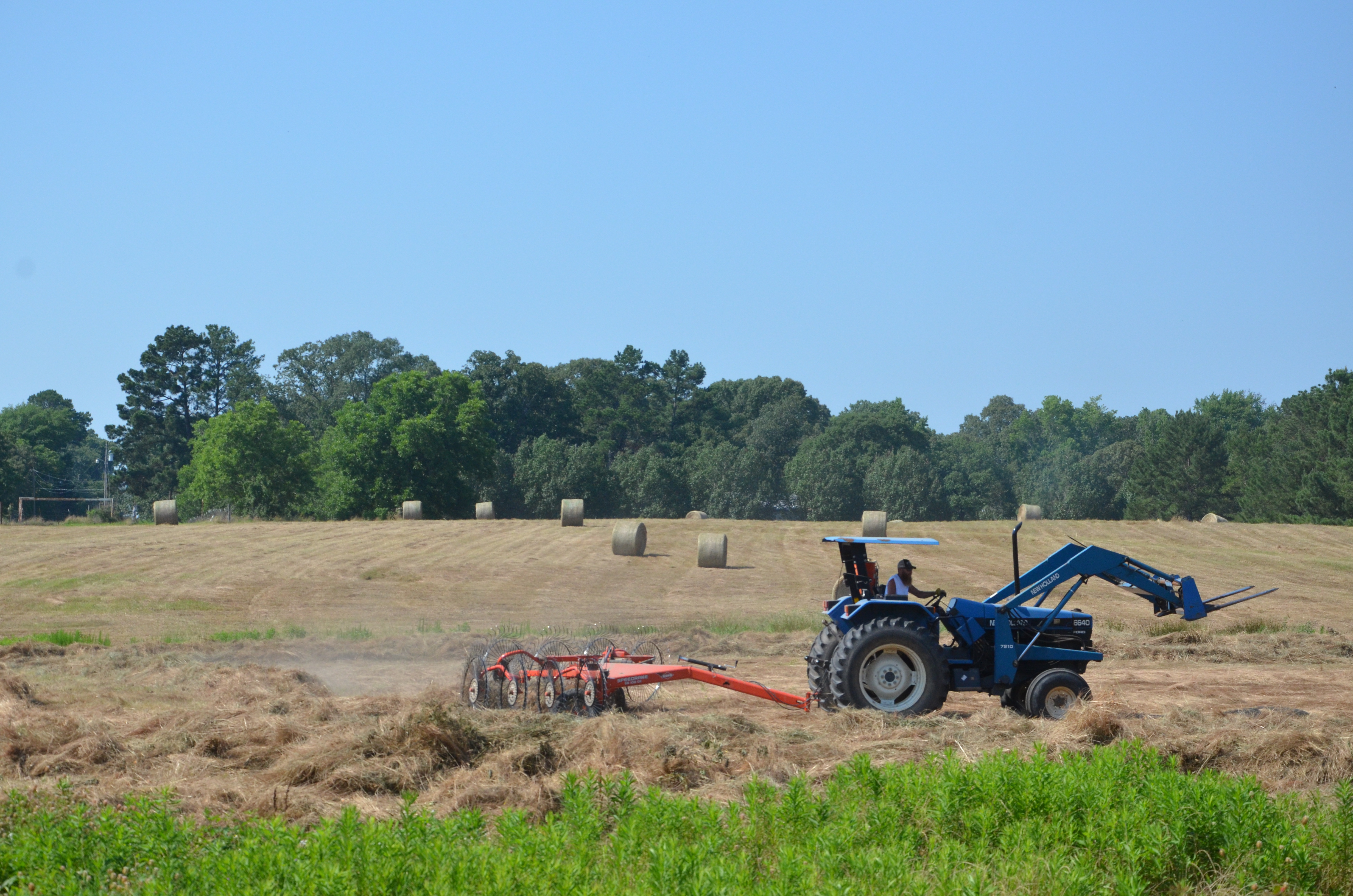
By: Adam Russell
Sunshine and no rain have Texas producers working full speed ahead
- Writer: Adam Russell, 903-834-6191, adam.russell@ag.tamu.edu
- Contact: Vanessa Corriher-Olson, 903-834-6191, vacorriher@ag.tamu.edu
OVERTON – Hay production in East Texas kicked into high gear last week as multiple days of sun dried out fields and provided a window of opportunity for cutting, raking and baling.
Dr. Vanessa Corriher-Olson, Texas A&M AgriLife Extension Service forage specialist, Overton, said there was a boon in activity last week following a month of delays for most producers in East Texas due to rain, cooler temperatures and soggy fields.
It was the spring’s first cutting for many producers around the region, she said. The first cut is considered a “clean-up,” when voluntary ryegrass and weeds are cleared from hay meadows to allow promotion of Bermuda grass. Bermuda grass and other preferred forages take water, fertilizers and ridding the meadow of competition for water and nitrogen, such as weeds.
Producers should fertilize according to soil test recommendations to maximize a meadow’s potential, she said. Herbicides can also be an effective method of treating weeds and other unwanted grasses.
“A lot of factors can impact production and number of cuttings,” Corriher-Olson said. “But decreasing weed populations and following soil test recommendations for fertilization are key. You have to have timely rains as well but that’s up to Mother Nature.”
Irrigation capability can boost grass growth in some parts of the state but it’s not prevalent among producers in East Texas, she said.
Producers want quantity but they also want quality in forages, Corriher-Olson said. More volume can be good for producers, but she said there is a balance because it is important for hay to meet livestock nutrient needs when producing or purchasing it.
Steps can be taken to provide Bermuda grass the opportunity to grow at an optimal rate and quality is based on many of the same factors, she said. But the biggest influence on quality is when producers cut the hay.
“Plants mature and then the quality starts going down,” she said. “It’s a balance. A producer might want more hay so they let it continue to grow but in the meantime they’re losing quality,” Corriher-Olson said.
“Most producers cut Bermuda grass at 12-15 inches tall, she said. But other forages are different, so it’s important to research the best time to cut other grasses.”
The summer sun and heat will slow growth without timely rains but it’s typically four weeks between cuttings if everything falls in place for producers, Corriher-Olson said.
“We’re a month behind the typical year,” she said. “Most producers should be making their second cutting right now, a better quality cutting, before temperatures get higher and grasses are slowed by excessive heat.”
AgriLife Extension district reporters compiled the following summaries:
CENTRAL: A week of dry weather meant lots of hay was baled around the district, but quality varied from very good to over-mature. Wheat and oats were harvested for grain and quality was not so good. Dry conditions allowed other field work. Temperatures warmed up. Erath County reported adequate moisture. Livestock around the district were in good condition. Several corn and sorghum fields still had big washouts and areas of stunted growth. Late fertilizer and weed control were applied. Overall livestock, range and pasture conditions were good. Overall crop conditions were mostly fair.
ROLLING PLAINS: Warm weather and windy days dried the topsoil enough for wheat harvest to resume. Wheat yields have been all over the board with reports of 16-60 bushels per acre on dryland and 50-85 bushels per acre on irrigated land. Some freeze damage and rust issues have affected yields. Hay harvest was underway. Cotton planting was in full swing. Range and pastures were in good condition as were livestock. Stock tanks and area reservoirs were full. Some repairs were being made to roads and fences damaged by flooding.
COASTAL BEND: Hot, humid conditions persisted with no rain, which allowed farmers and ranchers to get a lot of fieldwork done. Temperatures and the heat index soared. River flooding occurred in one area that had been replanted due to previous flooding. The Colorado River reached a 37-foot flood stage, but had begun to recede. Drier weather allowed hay producers an opportunity to harvest and good yields were reported. A lot of hay was expected to be produced with drier weather. Corn leaf disease such as southern rust was present and presented a concern as plants finished out. Stink bugs, head worms and sugarcane aphids were causing concerns for grain sorghum producers. Drier weather allowed herbicide applications on pastures and forage crops. Cattle remained in good to excellent condition.
EAST: Some counties in the district continued to receive excessive rains, while other counties had a break and dried out a bit. Counties reported good to fair pasture and range conditions with a few reporting excellent conditions. Subsoil and topsoil moisture was mostly adequate with some reporting surplus. Ponds and creeks were full. Houston County reported 12-plus inches of rain. Corn crops were standing in water and turning yellow. Other counties were harvesting some fruit and vegetable crops. Onions, squash, tomatoes and fruits were starting to produce in Smith County. Diseases were being reported on trees and lawns. Several days of sunshine allowed some pastures to dry enough for producers to cut and bale hay. Forages were in good condition. Weed control will be needed as soon as drier conditions allow. Producers in low lying areas were still having problems accessing pastures to harvest hay and spray. Cattle were in fair to good condition. External parasite control was underway on cattle. Horn flies were in full force. Cattle prices were declining. Mosquitos were a problem as were gophers and feral hogs.
SOUTH PLAINS: Most planting was complete in Bailey County, and layby applications of herbicide and fertilizer were being made. In Cochran County, subsoil and topsoil moisture levels dropped due to high temperatures and wind. Producers have finished initial planting and the replant stage will begin soon. Producers were irrigating. Pasture, range and winter wheat needed rain. Cattle were in good condition. A few producers in Crosby County, who planted cotton in early May, reported replanting. Cotton planted after May 25 seemed to be doing much better than cotton planted earlier because of cool, wet weather. In Lubbock County, field operations included emergency tillage, planting, replanting and herbicide applications. Cotton planting was complete, and the crop ranged from planted to second true leaf. Sorghum and corn looked good. Wheat harvest began. There was some seedling disease present, but the biggest management concern was weed control. Mitchell County received 2.5 inches of rainfall during the week. Scurry County producers received 1-3 inches of rain and were trying to complete cotton planting. The outlook was positive. Wheat harvest began last week in Swisher County with about 5 percent of farms done. Sorghum planting increased. Corn was at V4 stage and looked healthy. Fall armyworm pressure increased.
PANHANDLE: Warm dry days have helped planting and growth of cotton crops. Pasture and cattle conditions improved but the district needed moisture. Wheat harvest was approximately a week away for the majority of crops. Hot, dry, sunny days have arrived. Temperatures reached into the mid-90s. Producers wrapped up planting season and started harvesting wheat.
NORTH: Topsoil moisture was adequate to surplus throughout the counties. Weather turned hot and humid, and conditions dried out rapidly. Farmers were able to access fields, and planting conditions were very good. Grasses were in good condition. However, rains have cut protein levels in hay laying on the ground waiting to cure and be baled. Producers tried to get the first cutting of hay out of the fields. Most of the last cotton and soybean fields were planted. Corn looked good. Bermuda grass recovered slowly in some fields. Livestock were doing well. Mosquitos and flies were terrible. Disease and insect presence were high in gardens.
FAR WEST: Conditions were hot and humid with rains across the district ranging from traces to more than 4 inches. Ward County reported warm, dry conditions but that range conditions improved following rain in early June. Lightning was prevalent in the thunderstorms and started a fire in the northern part of Hudspeth County, but it was contained. Cotton planting in Glasscock County was complete, and most fields emerged and looked good. Wheat harvest neared completion, and yields have been very good with 40-70 bushel per acre being reported. Sorghum neared boot stage with a lot of fall armyworms. Triple digit temperatures were a concern as corn started to tassel and similar temperatures were forecast. Most cattle were still on supplemental feed, but mineral consumption was reduced. Pecan trees needed water, and evapotranspiration was expected to be a factor with temperatures over 100 degrees. In Pecos County, corn was in good condition, and winter-wheat was harvested. Pasture and range conditions across the district were fair to good.
WEST CENTRAL: Days were hot and humid with warm nights. Scattered rains were reported. Most areas were drying out enough to get into fields, so activities increased. Cotton planting was in full swing with a large portion of fields planted. Corn and sorghum crops were in excellent condition. Wheat harvest was underway in fields dry enough to work. Most wheat and oats looked good, but some reports noted sprouting. Rust and other problems may show up before harvest concludes. Some wheat will be cut for hay. Producers were making their first cut of Bermuda hay. Range and pastures were in excellent condition. Grasses looked good, but weeds were abundant where they have not been managed. Livestock remained in fair to good condition, but some sheep and goat producers on small acreages were battling stomach worms. Cattle were fat, but prices have declined. Grazing pastures for cattle were lush, and livestock were doing very well. Pecan trees were in good condition with a heavy crop of 4-5 nuts to a cluster reported.
SOUTHEAST: Much of the district was still very wet, and some areas were still flooded. Rain continued to soak some areas. The forecast called for more rain. Some rice was planted. There still has been little to no hay produced. Most producers have hired planes to spray cotton and sorghum for insects. Livestock were in decent condition, but many were displaced by recent floods and were being returned to their own pastures. Vegetable gardens struggled due to the excessive moisture. Some crops were trying to recover, but most were drowned out by flooding. Producers in Brazos County were able to get in fields and plow. It was unlikely that small grains remaining in fields would be harvested. A few fields were cut and baled quickly before the rain started again. Soil-moisture levels throughout the region ranged widely from adequate to surplus, with most ratings in the surplus range. Rangeland and pasture ratings varied widely too, from excellent to very poor, with good and poor ratings being most common.
SOUTHWEST: Weather conditions improved, and ponds were still full. Warm-season grasses, pastures and crops improved. Daytime temperatures warmed up with highs in the upper 90s. Wheat harvest was almost complete, and corn and milo looked good. Livestock remained in good condition.
SOUTH: Temperatures began to rise, well into the triple digits, throughout the district. Rain events ranged from drizzle to scattered showers of up to 3 inches in some areas. Areas that had missed previous rains received good amounts, and pastures responded by greening up. Crops were in good condition and pastures were rated good to excellent. Range and pastures were expected to dry out very fast if temperatures continued to rise. Potato and corn food processing continued. Peanut planting also continued. Cotton was in the squaring stage, corn continued to mature, and sorghum started to mature and turn color. Body condition scores on cattle remained good to excellent. In Duval County, not many crops, other than grasses for hay and some small fruit, have been planted and were in good condition. In Jim Wells County, some fields dried enough for farmers to begin spraying for various pests. Local beef cattle markets reported a slight increase in prices but a slight drop in offerings. Recent rains reduced the number of cattle being marketed. Soil moisture conditions ranged from 60 percent short in Maverick County to 100 percent adequate in Brooks County and 100 percent surplus in Kleberg and Kenedy counties. A great harvest season was predicted for some areas. All vegetables, forage and grains have been planted and have emerged. A lot of Coastal Bermuda hay bales have been available due to good rangeland conditions. For now, livestock have plenty of good forage to graze on. Corn and sorghum made excellent progress due to very good growing conditions and soil moisture. Some sorghum producers reported chinch bug activity in some fields but said they would monitor population levels at this time. Melons continued to make good progress and the onion harvest was complete.
-30-
Find more stories, photos, videos and audio at http://today.agrilife.org
Farm & Ranch
What to expect when your cow’s expecting
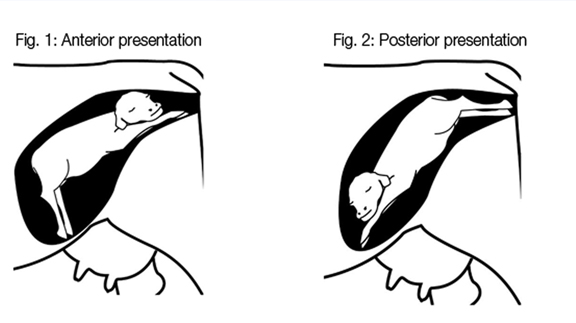
Overweight cattle and cattle turned out on lush legumes with high concentration are at risk as well. In this case, an epidural anesthetic is usually necessary. The tissue will need to be replaced and sutured in place. Vaginal sutures will need to be removed prior to calving.
Toxemia happens when cattle are exposed to low nutrition during the last two months of pregnancy. Cows that are overly fat and/or carrying twins are at higher risk. Cows with toxemia become depressed, stop eating and often stand off away from the herd. You will notice some have the scent of acetone on their breath. As the condition worsens, the cow may develop muscle tremors. Treatment for toxemia is IV glucose, B vitamins or propylene glycol given by oral drench.
During calving there are a number of problems that could occur. Those include dystocia, bruises and lacerations to the birth canal, uterine prolapse, milk fever, retained placenta and grass tetany.
According to the Beef Cattle Handbook, a product of Extension Beef Cattle Resource Committee Adapted from the Cattle Producer’s Library, at any time a cow is unable to deliver her calf, a dystocia has occurred. There are many things a producer can do to reduce this incidence. With heifers, lot those with small pelvic areas before breeding. Select bulls based on their birth weight, not on their relative size. Ultimately use bulls that will produce small birth-weight calves. When calving first-calf heifers separate them from cows, at best into small groups. Producers will want to provide surveillance over the heifers on a 24 hour basis. Some tips include restricting the calving to 42 to 60 days. That will enable personal focus for a short, intense calving period. Also feeding at night between 9 and 11 p.m. will cause more animals to calve during daylight hours.
If problems arise and a cow hasn’t shown progress in 60 to 90 minutes, it’s time for the producers to step in. Signs of an abnormal delivery are the head only, the head and one leg, one leg alone or the tail. At this point it is best to contain the animal in a squeeze chute or small pen. A calf can only deliver one of two ways: both front feet followed by the head or both back feet out together. Once constrained, using ample lubrication, a producer can reach in and move the calf to one of the two correct positions. If unable to do so, a veterinarian should be called. The top problems include not getting the head out with front feet, having a calf too big to deliver through the mother’s birth canal resulting in hip lock and abnormal breach in which the tail is the only part of the calf visible through the vulva. If all goes well and pulling the calf is suggested, direct traction down and away from the birth canal. Do not pull straight out behind the cow. If two men are unable to pull the calf using the OB chains or when using the calf puller, do not use excessive force. It will not deliver the calf. Odds are the cows birth canal is too small for the calf and will result in a c-section.
Keep in mind bruises, lacerations and rupture of the birth canal are possible during a difficult birth. Rough handling of the calf or maternal tissues and careless use of obstetrical instruments during calving add danger. This is typical when a cow is in labor several hours with a dry, non-lubricated birth canal.
Cows with difficult delivery and trauma to the tissue and birth canal may have damage to the nerves and spinal cord or hips that supply the legs. This results in abnormal leg function. In some cases, while pulling a calf, excessive force was used and the middle lower pelvis bones were fractured. At this point steroids are administered to help with swelling and nerve healing. In bad cases were the cows are unable to stand, they need to be hoisted to their feet twice a day.
In older cows producers may see difficulty in birth injury or irritation of the external birth canal and severe straining, retained placenta and loose uterine attachment in the abdominal cavity called uterine prolapse. When noticed, this condition needs immediate action. Apply material to uterine wall to saturate fluid ASAP. You can use sulfaurea powder, urea powder or even sugar. Replace the uterus immediately or call your veterinarian. Without properly replacing the uterine horns, prolapse will reoccur.
Usually the placenta is passed in three to eight hours. If the placenta hasn’t passed in eight to 12 hours of calving, the placenta is retained and the cows must be treated. A number of reasons lead to retained placenta: dystocia, c-sections, fetotomy, twinning or abortion along with other infectious diseases. Even feed deficiencies, malnutrition, low carotene, vitamin A, iodine, selenium and vitamin E can be to blame. To treat, use slight, manual force and gently pull on the placenta. If it resists, stop and pack the uterus with boluses or fluid douches to keep antibiotics in the uterus. As with prolapse, be sure to use proper hygiene when treating the uterus or worse problems will occur.
Another condition parallel with cows with age, number of calves and dairy or mixed breeds is milk fever. This condition happens when a cow starting to produce milk is unable to remove calcium from her bones quickly enough. If blood levels of calcium fall below the minimal level, the muscles of the body are unable to function. This leaves the cow almost crippled, comatose and dead. High blood levels of estrogen inhibit calcium mobilization; this may be a factor on pastures that are high in legumes. Usually a slow administer of IV calcium is given. 300 to 500 ml of a commercial calcium solution is given over 20 to 30 minutes.
Lastly, grass tetany poses as an issue to cows calving. It is similar to milk fever, but in this instance cattle have heavy post-calving lactation and lose large amounts of magnesium in their milk. Most types of mixed pasture grasses are low in magnesium. If cows are exposed to cold weather or stress during early lactation, their blood levels may drop low enough to cause grass tetany. At that point an IV of magnesium is given with calcium. Treatment is not as effective as with milk fever and in many cases, animals do not respond.
This article was originally published in the January 2016 issue of North Texas Farm & Ranch.
Farm & Ranch
Managing Show Cattle Through The Winter

By Heather Welper
Husband and wife duo, Heather and Calvin Welper, are the Co-Owners and Operators or Two C Livestock, located in Valley View, Texas.
The pair’s operation has a show cattle focus where they raise and sell purebred heifers of all breeds and club calf Hereford steers.
When it comes to show cattle, the Welpers know a thing or two including how to prepare for the cold winter months and the Texas major show season run.
To read more, pick up a copy of the November edition of North Texas Farm & Ranch magazine, available digitally and in print. To subscribe by mail, call 940-872-5922.

Farm & Ranch
Double M Ranch & Rescue
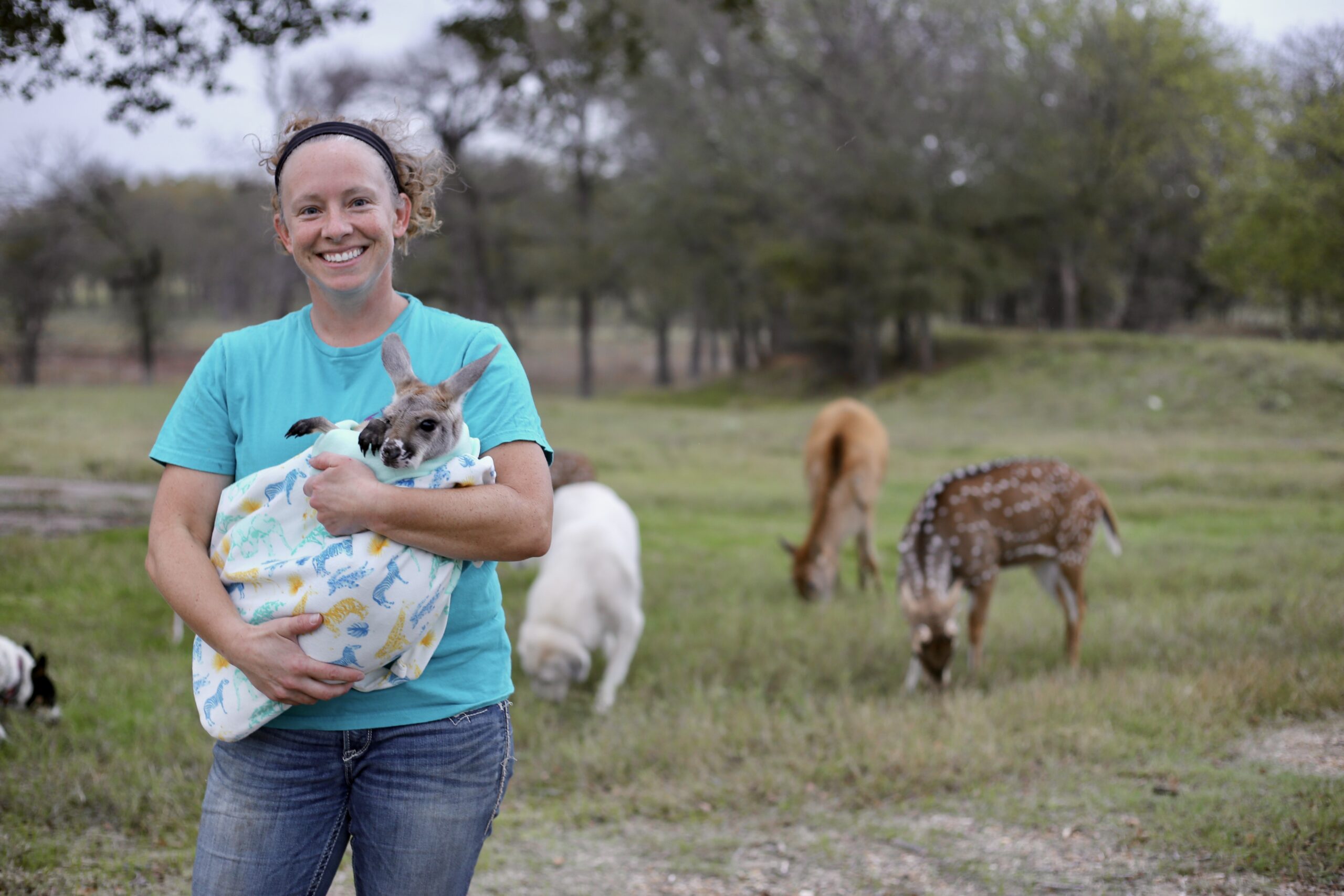
By Hannah Claxton, Editor
As the sun rises each day, so do the dozens of mouths that Meghan McGovern is responsible for getting fed. Rather than the sounds of a rooster crowing, McGovern hears the bellows and bleats of a variety of exotic deer, the chortle of kangaroos, the grunts of water buffaloes, and the chirps of a lemur.
Nestled against the banks of the Red River, the Double M Ranch and Rescue, with its high game fences and deer sprinkling the landscape,s its in stark contrast to the surrounding ranches.
“Having deer is kind of like eating potato chips- you can never actually have just one,” said McGovern with a laugh.
McGovern has several herds to take care of- fallow deer, axis deer, water buffalo, goats, and bison. In smaller numbers, there’s also a few kangaroos, a lemur, a potbelly pig, a pair of zebras, a watusi, and a few horses.
To read more, pick up a copy of the November edition of North Texas Farm & Ranch magazine, available digitally and in print. To subscribe by mail, call 940-872-5922.
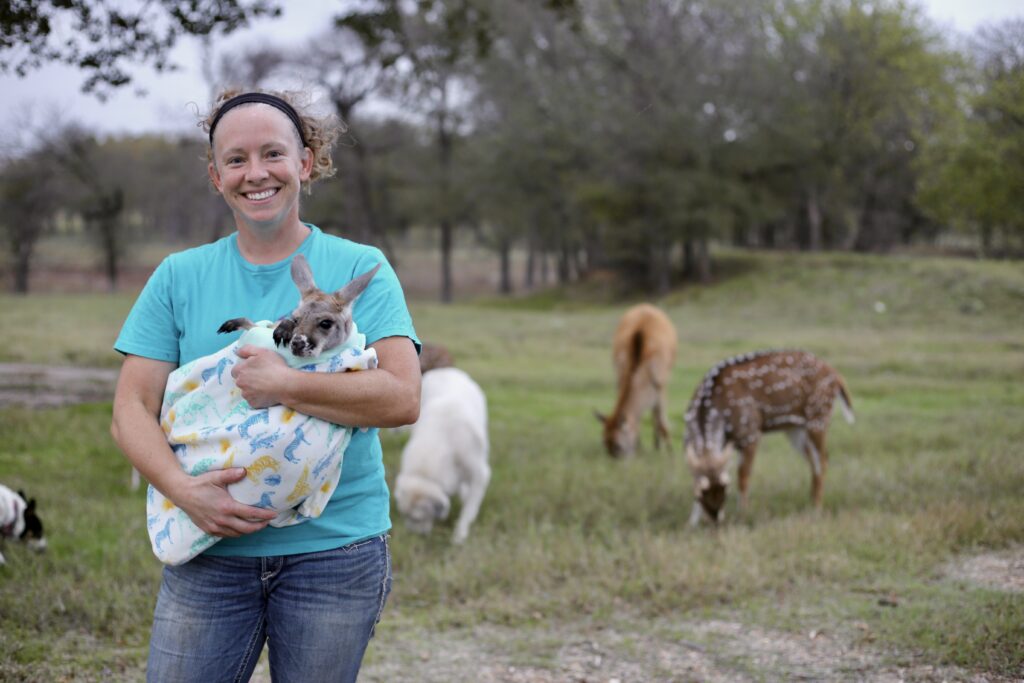
-
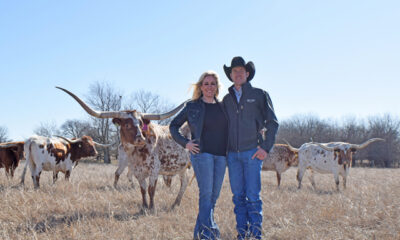
 Country Lifestyles2 years ago
Country Lifestyles2 years agoScott & Stacey Schumacher: A Growth Mindset
-
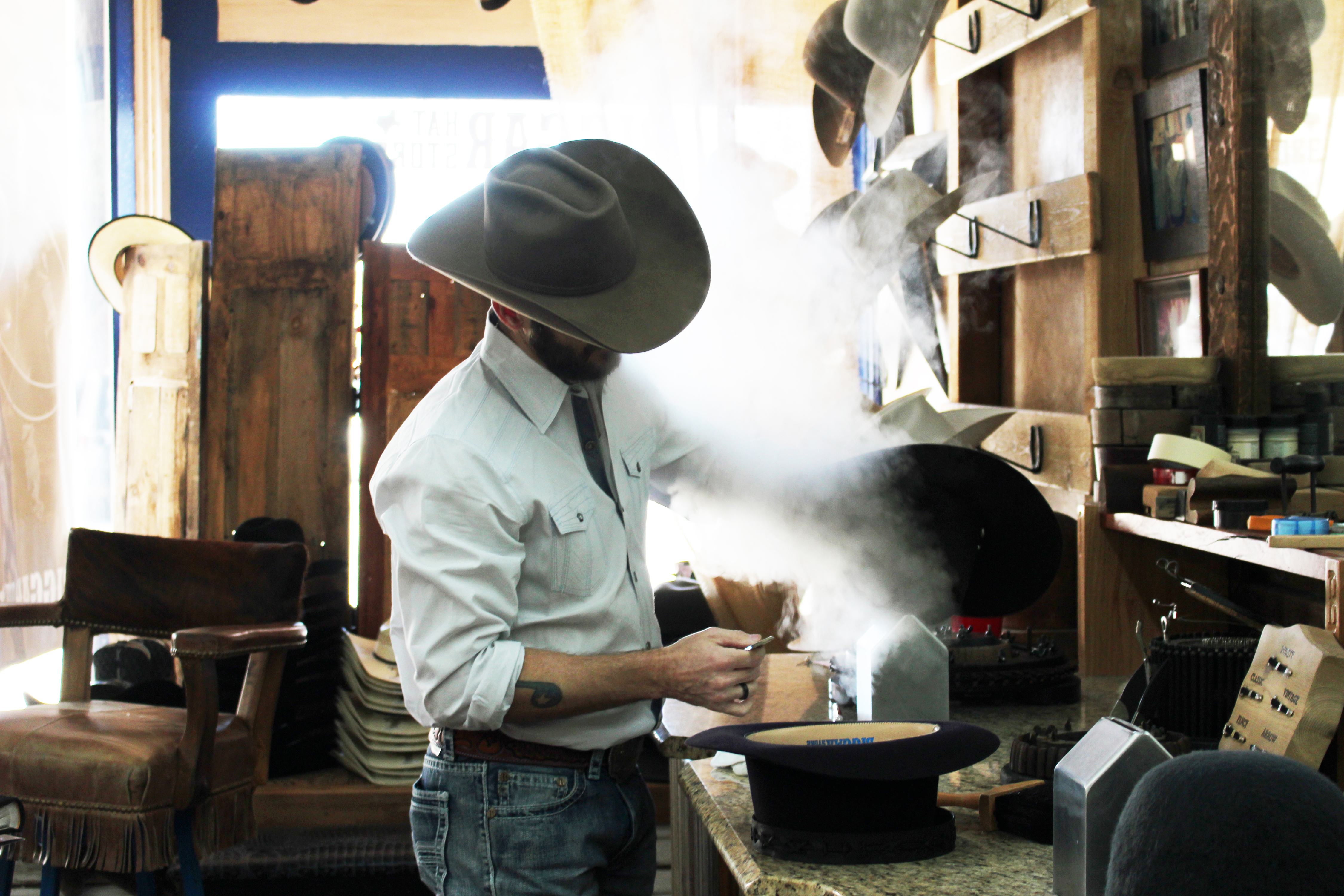
 Country Lifestyles8 years ago
Country Lifestyles8 years agoStyle Your Profile – What your style cowboy hat says about you and new trends in 2017
-
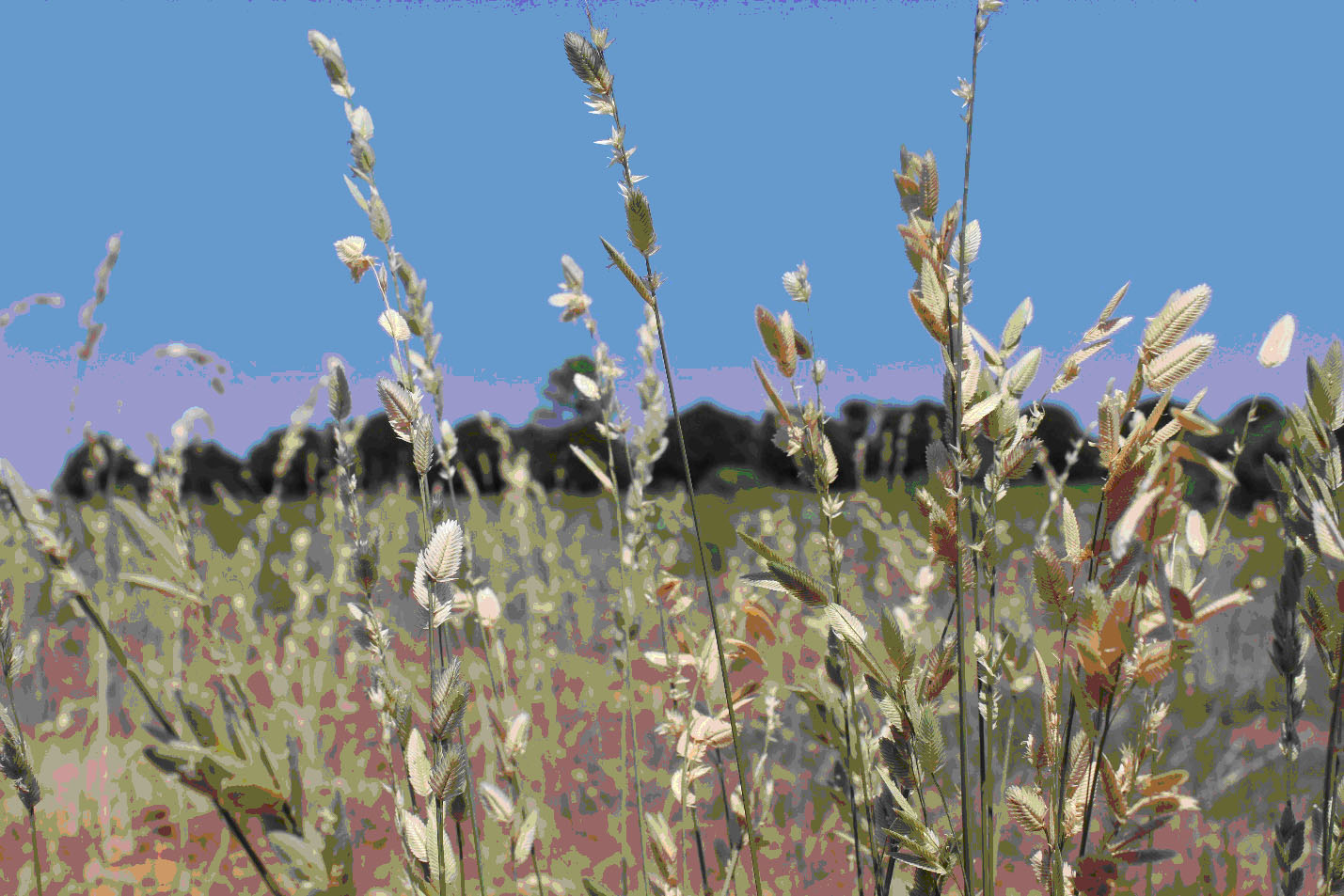
 HOME8 years ago
HOME8 years agoGrazing North Texas – Wilman Lovegrass
-
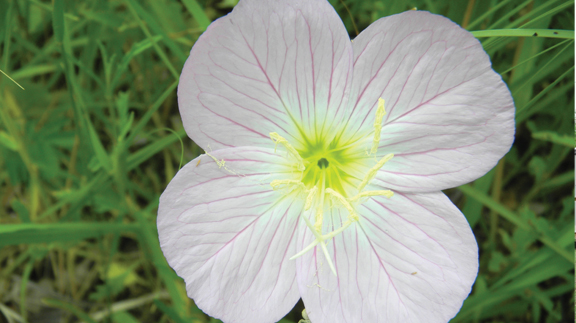
 Outdoor10 years ago
Outdoor10 years agoButtercup or Primrose?
-

 Country Lifestyles9 years ago
Country Lifestyles9 years agoJune 2016 Profile – The man behind the mic: Bob Tallman
-
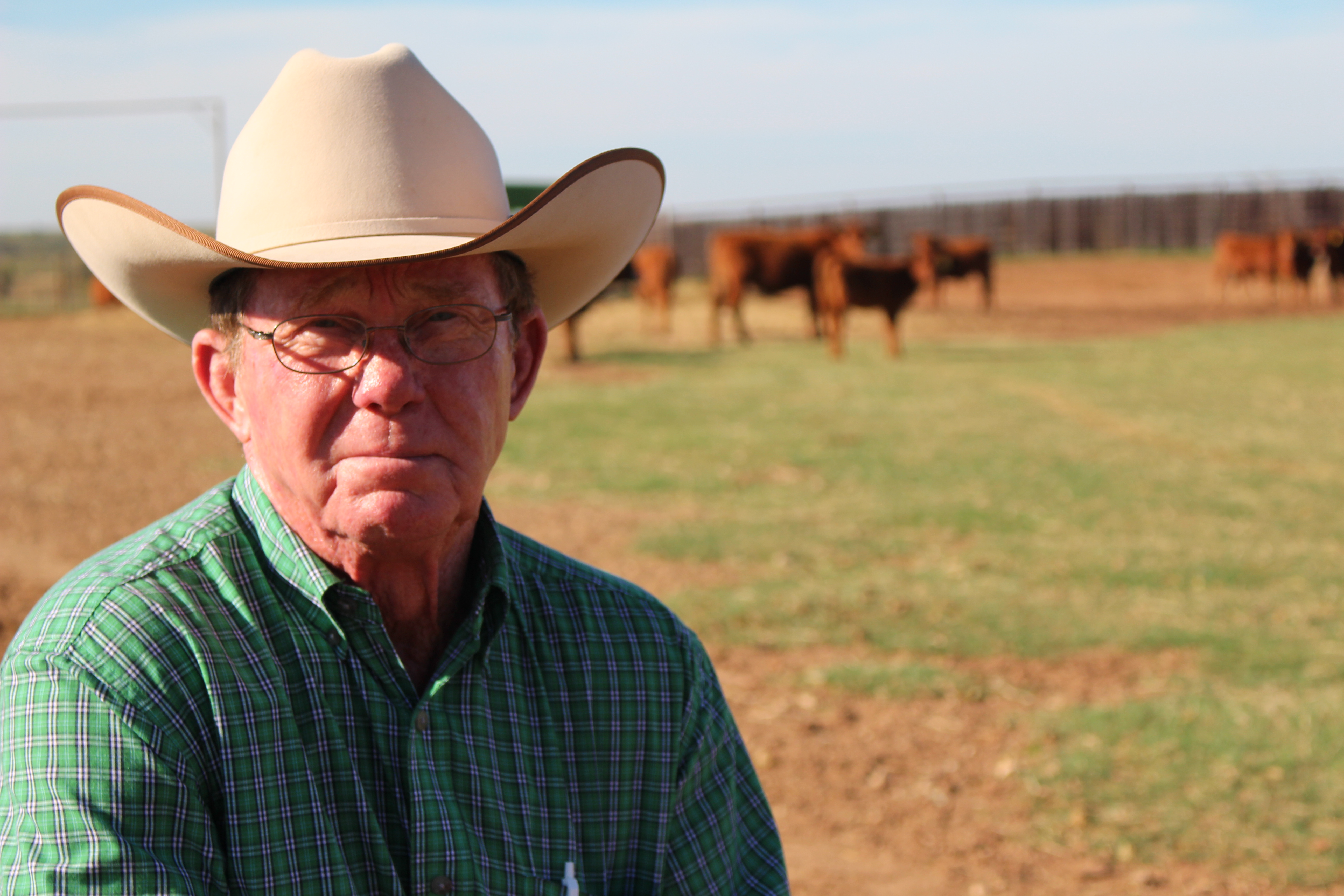
 Country Lifestyles8 years ago
Country Lifestyles8 years agoDecember 2016 Profile, Rusty Riddle – The Riddle Way
-
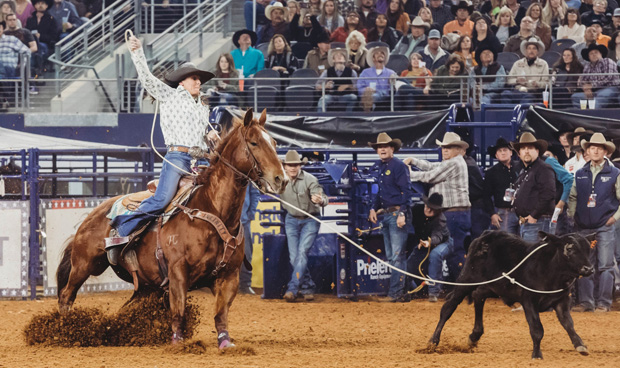
 Country Lifestyles5 years ago
Country Lifestyles5 years agoAmber Crawford, Breakaway Roper
-

 Horsefeathers11 years ago
Horsefeathers11 years agoMount Scott: Country Humor with David Gregory




